A reliable heating system is essential for maintaining comfort in your home, especially during the colder months. Whether you’re considering a furnace installation, furnace replacement, or exploring heat pump options, understanding the installation process can help you make informed decisions.
Assessing Your Home’s Heating Needs
Evaluating the Current Heating System
Assessing your home’s heating needs begins with evaluating the current heating system. Our professionals will inspect your existing furnace or heat pump to determine its efficiency, performance, and overall condition. Factors such as the age of the unit, frequency of repairs, and energy bills play a crucial role in this assessment. If the system is outdated or has frequent issues, a new furnace installation might be the most cost-effective solution. This evaluation helps us decide if a repair, replacement, or complete installation is the best course of action for your home.
Choosing Between Furnace and Heat Pump Installation
Choosing the right heating solution is essential for maintaining comfort and energy efficiency. Our technicians will discuss the benefits and drawbacks of both furnace installation and heat pump installation. While furnaces are excellent for providing powerful heat in colder climates, heat pumps can offer both heating and cooling, making them versatile for varying weather conditions. We help you weigh these options, considering factors like climate, budget, and personal preferences, to ensure you choose the best system for your home.
Determining the Right Size and Capacity
Sizing the heating system correctly is vital for optimal performance and efficiency. An undersized unit will struggle to heat your home, while an oversized unit may cycle on and off too frequently, leading to unnecessary wear and tear. Our professionals conduct a detailed load calculation, considering the size of your home, insulation levels, number of windows, and local climate conditions. This ensures that we install a system with the right capacity to heat your home efficiently without wasting energy.
Preparing for Furnace Installation
Conducting a Pre-Installation Inspection
Before beginning the furnace installation, our technicians conduct a thorough pre-installation inspection. This includes checking the existing ductwork, ventilation, and electrical connections to ensure they are compatible with the new system. Identifying and addressing potential issues at this stage helps prevent complications during the installation process and ensures a smooth transition to your new heating system.
Ensuring Proper Ventilation and Ductwork
Proper ventilation and ductwork are crucial for the efficient operation of your new furnace. Our professionals will inspect and, if necessary, adjust or replace sections of the ductwork to ensure they are free from leaks, obstructions, and damage. Ensuring that the ductwork is in good condition helps improve airflow, enhance system efficiency, and provide even heating throughout your home. Adequate ventilation also helps maintain indoor air quality and ensure the safe operation of the furnace.
Planning the Installation Timeline
Planning the installation timeline is essential to minimize disruptions to your daily routine. Our team will work with you to schedule the installation at a convenient time, ensuring that all necessary preparations are made in advance. By coordinating the process carefully, we can complete the installation efficiently and with minimal inconvenience to you and your family. Clear communication about the timeline helps set expectations and allows you to plan accordingly.
The Furnace Installation Process
Removing the Old Furnace
The first step in the furnace installation process is removing the old furnace. Our technicians start by disconnecting the unit from its power source and safely shutting it down. Next, we carefully remove the old furnace from the surrounding ductwork and other connections. This step involves safely handling any refrigerants, gas lines, and electrical connections to avoid any hazards. Proper disposal of the old unit is important to ensure environmental safety and compliance with local regulations.
Installing the New Furnace
Once the old furnace is removed, our professionals begin installing the new furnace. This involves positioning the new unit in the correct location, ensuring it is level and secure. Our team then connects the furnace to the existing ductwork, gas lines, and electrical systems. We make sure all connections are tight and free from leaks to guarantee safe and efficient operation. The installation must meet all local building codes and safety standards.
Connecting and Testing the System
After installing the new furnace, our technicians will connect and test the system to ensure it operates correctly. This includes checking all connections, verifying proper airflow, and testing the thermostat. We also inspect for any potential issues that could hinder performance. Once the system is fully operational, we review its functions with you, explaining how to use the new furnace effectively. Testing the system thoroughly ensures that it provides reliable and efficient heating.
Post-Installation Considerations
Scheduling Regular Maintenance
Regular maintenance is crucial to keeping your new furnace in optimal condition. Scheduling check-ups helps identify and address minor issues before they become major problems. Our professionals recommend maintenance visits at least once a year, which include cleaning the system, checking for wear and tear, and making any necessary adjustments. Regular maintenance ensures that your furnace operates efficiently and prolongs its lifespan.
Identifying Signs of Potential Issues
Being aware of potential issues early can save you from unexpected breakdowns and costly repairs. Signs like unusual noises, inconsistent heating, or an increase in energy bills should prompt you to call our technicians. Early detection and repair can prevent minor problems from escalating. Our team can quickly identify and fix issues to restore your furnace to proper working condition.
Understanding Warranty and Service Agreements
Understanding the warranty and service agreements for your new furnace is important. These documents outline the coverage for parts and labor, helping you know what to expect in case of any malfunctions. Our technicians ensure you are familiar with your warranty terms and service agreements. Knowing the details helps you take full advantage of the benefits and services included with your new furnace, providing peace of mind and protection.
Conclusion
Understanding the furnace installation process is key to ensuring a smooth transition to a more efficient and reliable heating system. From assessing your home’s heating needs to preparing for installation and understanding post-installation requirements, each step plays a vital role in maximizing the performance and longevity of your new furnace. By following these guidelines, you can enjoy a safe and comfortable home with an efficient heating system that meets your needs.
For professional furnace installation in Gresham, contact Oxbow Heating & Cooling today. Our experts are here to provide you with exceptional service and support. Schedule your installation with us and experience the difference of working with trusted professionals.





